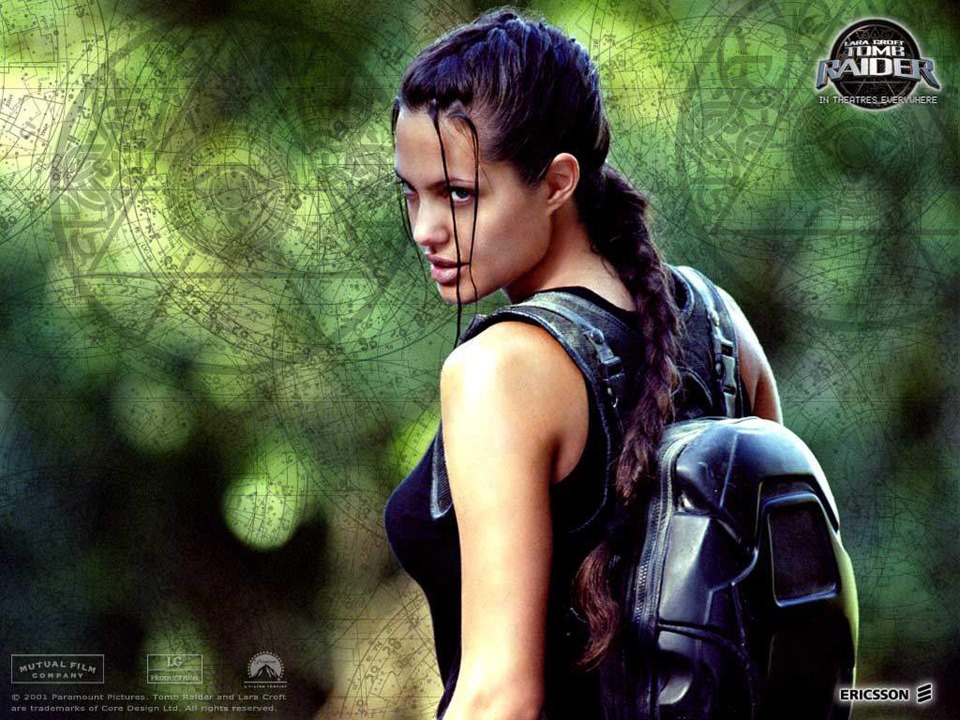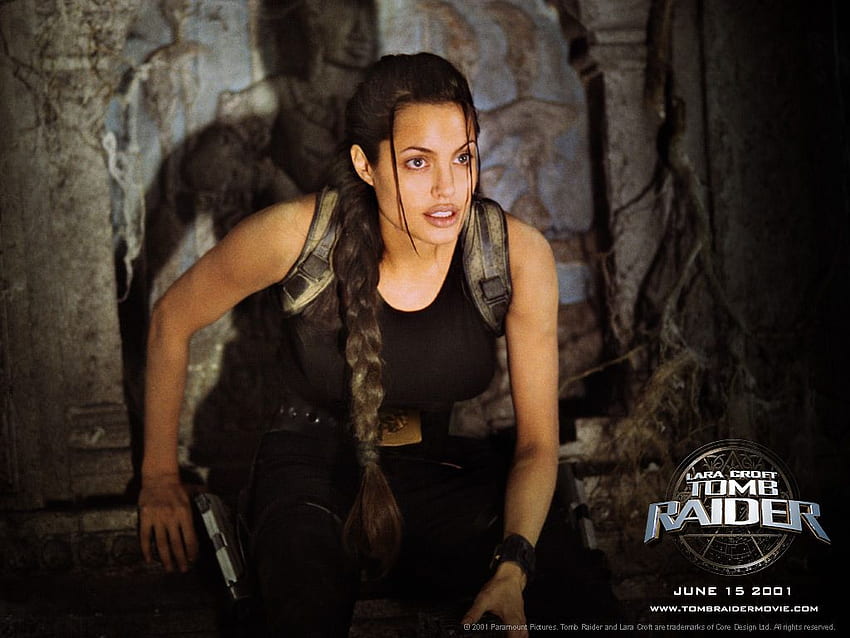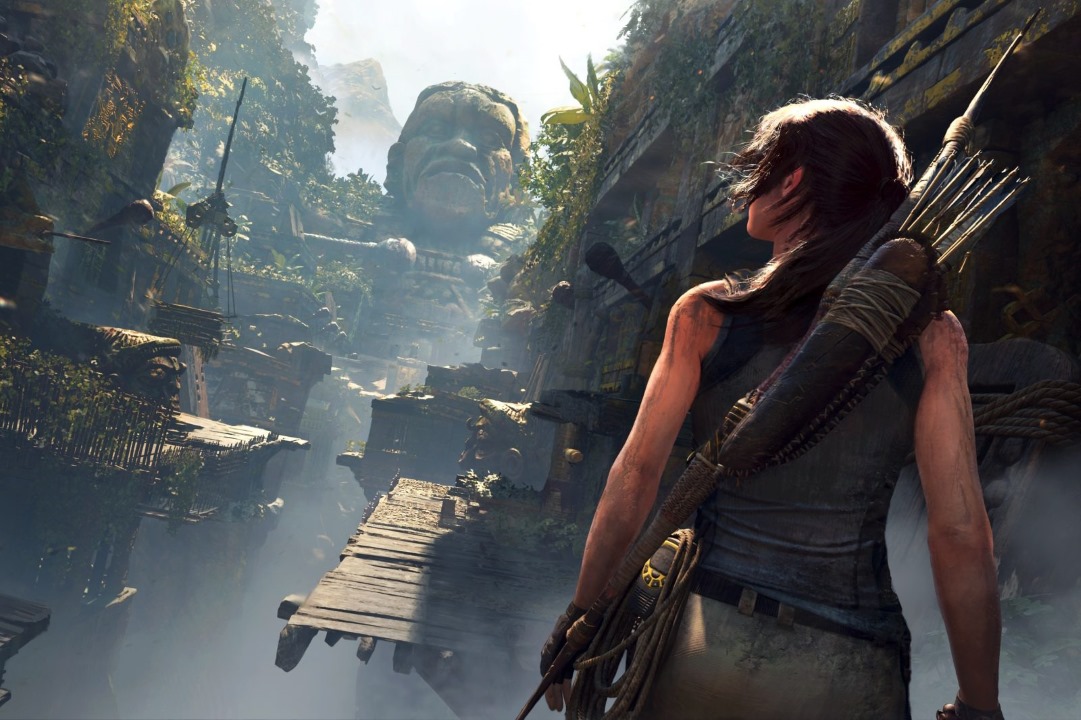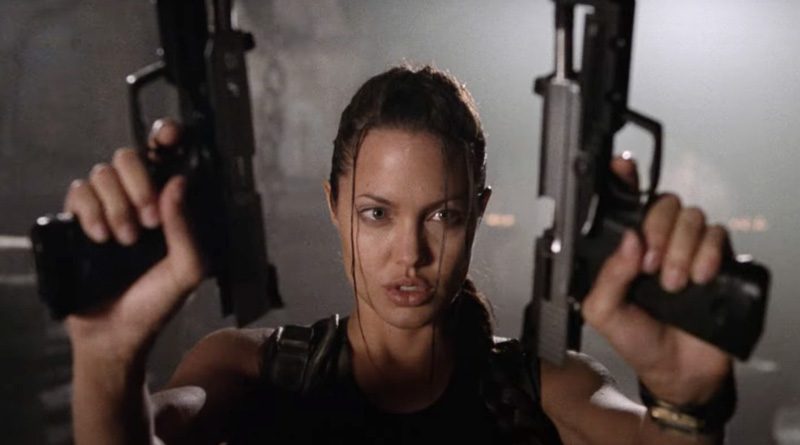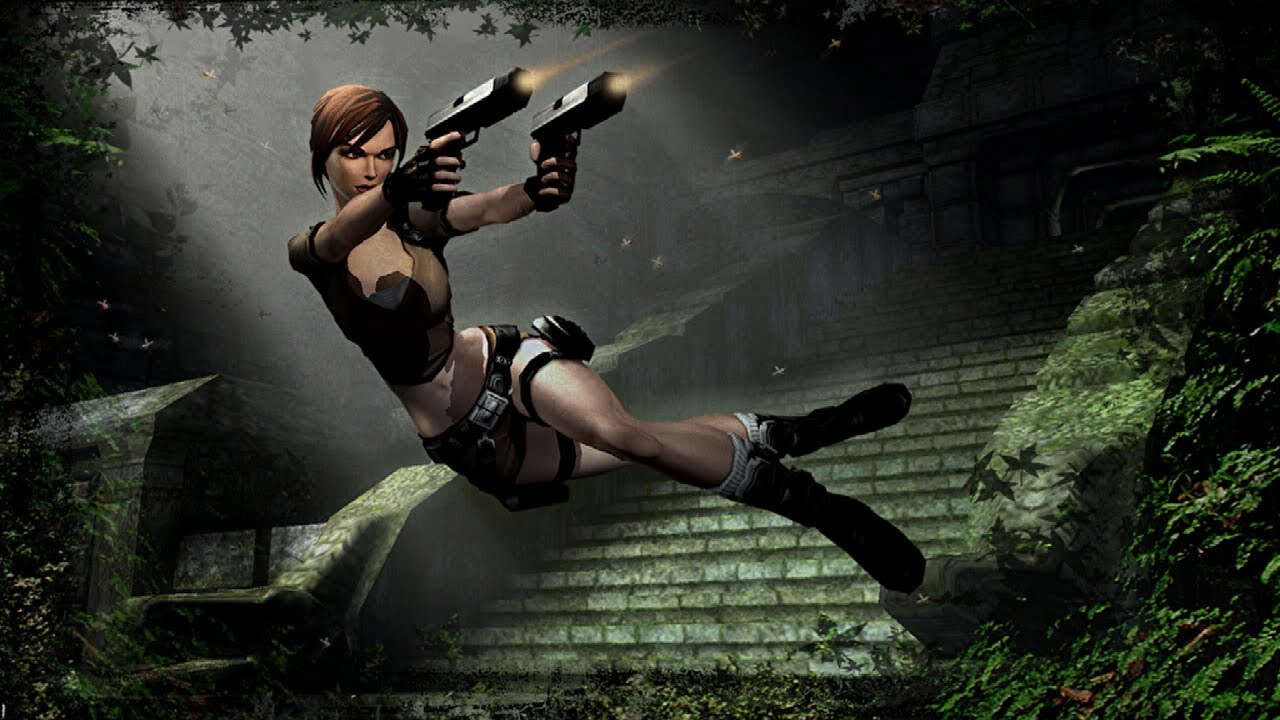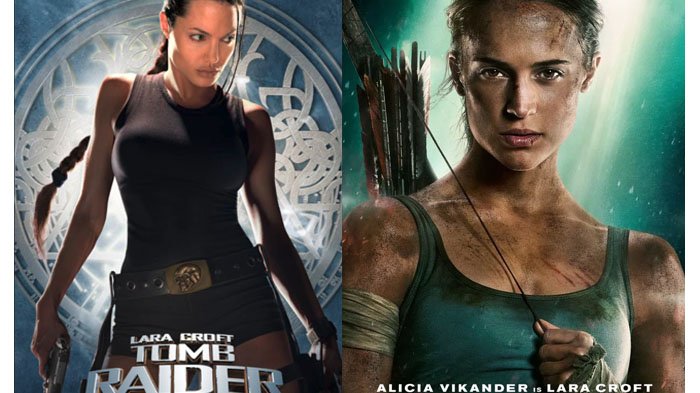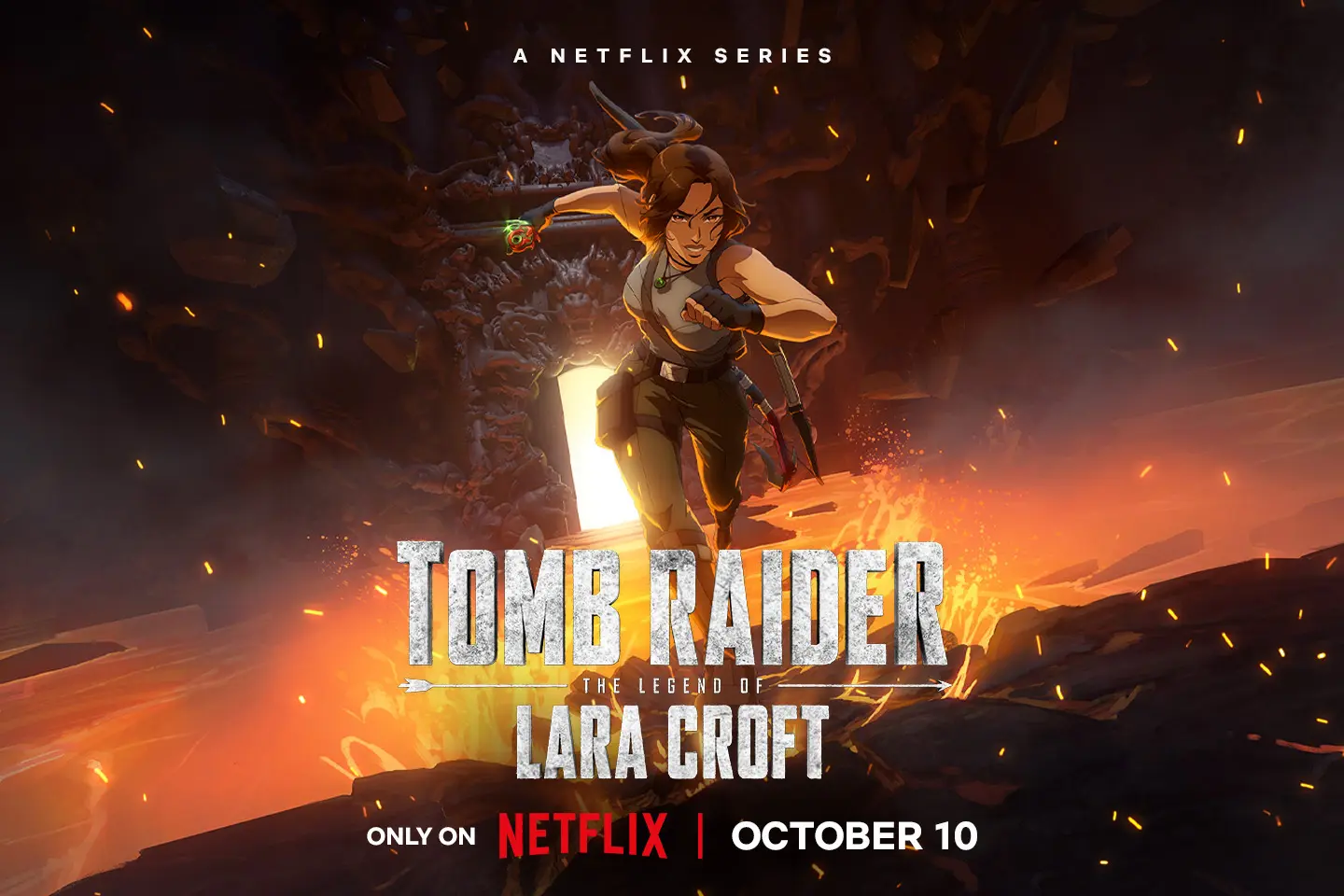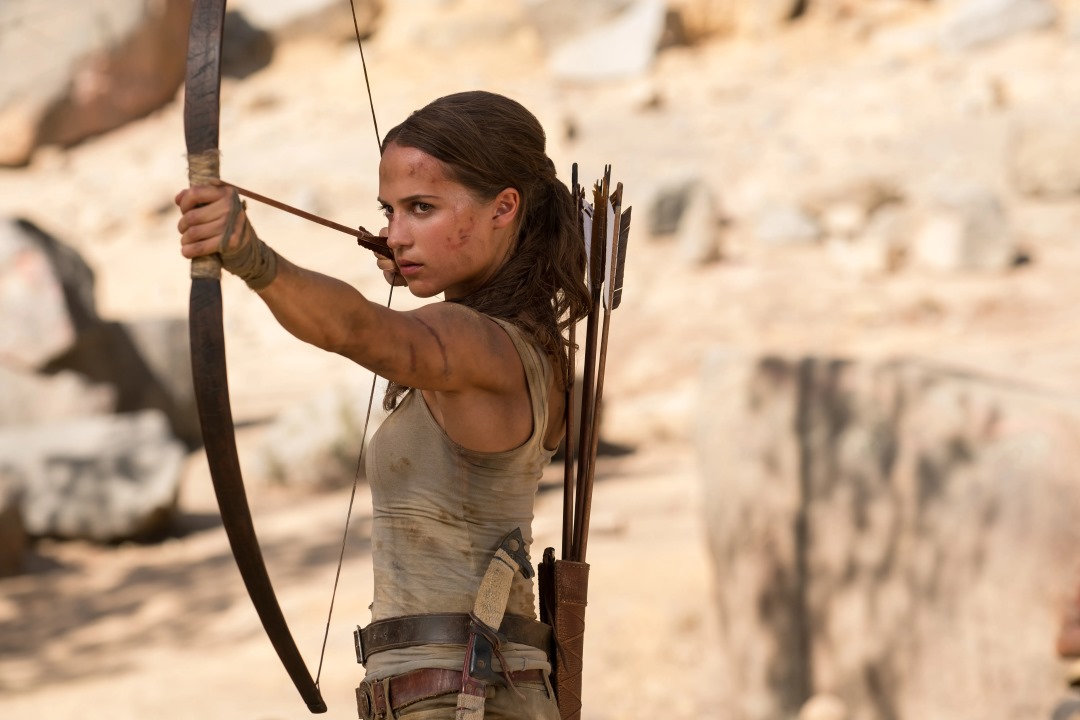Long before Lara Croft stepped onto the silver screen, she had already conquered the gaming world. Since her debut in 1996’s Tomb Raider, the daring archaeologist with twin pistols and a fearless attitude quickly became one of gaming’s most iconic characters. She wasn't just a video game protagonist—she was a cultural force. So it was only a matter of time before Hollywood came calling. But what followed was more than just one adaptation. Over the years, the Tomb Raider name has evolved across genres, tones, and actresses, from blockbuster adventure flicks starring Angelina Jolie to grittier reboots—and now, an upcoming Netflix anime that’s reigniting excitement in both gaming and film circles.
This article dives deep into every Tomb Raider film adaptation—from Angelina Jolie's early-2000s take to Alicia Vikander's modern reboot—and explores how they connect to the games that inspired them. We'll break down each film, compare portrayals of Lara, explore the technical and narrative shifts, and look ahead at what Netflix is preparing. Whether you're a long-time Tomb Raider fan or just curious how a video game heroine transformed into a movie icon, this is your complete cinematic guide to Lara Croft.
The Birth of a Legend: Lara Croft’s Video Game Origins
Lara Croft burst onto the scene in 1996 with Tomb Raider, developed by Core Design and published by Eidos Interactive. With her dual pistols, acrobatic moves, and British accent, she became a symbol of action gaming—one of the very first prominent female protagonists in the industry. The game, a blend of puzzle-solving, exploration, and light combat, was atmospheric and innovative for its time. Its success spawned a series that would grow increasingly complex over the years, with evolving graphics and deeper narratives.
But Lara wasn’t just a game character—she became a cultural icon. She graced magazine covers, starred in commercials, and even had her own action figures. As her design improved and backstory expanded, Lara transformed from a polygonal action hero into a complex, layered character. Still, in her early years, Lara was often marketed more for her appearance than her personality, which Hollywood leaned into when adapting her for the big screen.
The idea of turning Tomb Raider into a movie had been circulating since the late ’90s. It wasn’t just about cashing in on popularity—Lara Croft felt cinematic by design. Her globe-trotting adventures and mythical relic hunts were natural fits for the action-adventure genre, echoing the spirit of Indiana Jones with a modern twist. The timing was right: in a world freshly excited about digital effects and high-octane blockbusters, Hollywood was ready for its first real video game heroine.
Lara Croft: Tomb Raider (2001)
The first Tomb Raider film hit theaters in 2001, directed by Simon West and starring Angelina Jolie as the titular heroine. At the time, Jolie was already an Oscar winner (Girl, Interrupted) but also an unconventional choice for an action lead. Yet in many ways, she was perfect—embodying Lara’s confidence, physicality, and commanding presence.
The plot centers around Lara’s race to retrieve ancient artifacts before they fall into the hands of the Illuminati. Along the way, she battles robotic training systems, explores tombs in Cambodia, and travels through time via a mysterious triangle-shaped relic. While the story itself is often convoluted, the real focus is Jolie—her performance is charismatic and commanding, bringing a previously pixelated character to life with surprising believability.
The film is heavy on set pieces and light on character depth, but it captures the tone of early Tomb Raider games surprisingly well. There’s a stylized mix of mythology, action, and puzzle-solving that feels lifted directly from the PlayStation era. The mansion, complete with hidden rooms and automated traps, is faithful to the game’s design. Even Lara’s iconic butler makes an appearance.
Critically, the movie received mixed reviews. Many praised Jolie’s casting and commitment, but the plot and pacing left something to be desired. That didn’t stop it from being a box office hit—grossing over $275 million globally. For better or worse, Lara Croft: Tomb Raider became the defining image of game-to-movie adaptations in the early 2000s.
Lara Croft Tomb Raider: The Cradle of Life (2003)
Two years later, Jolie returned as Lara in The Cradle of Life, this time under the direction of Jan de Bont (Speed, Twister). The sequel aimed to refine the formula: bigger action, better stunts, and a more grounded tone. This time, Lara sets off on a globe-trotting quest to find Pandora’s Box before it’s used as a biological weapon. The film takes her from a sunken temple in Greece to a showdown in China, adding an international espionage flair.
Jolie’s performance is more confident here—less stylized and more nuanced. She also performs many of her own stunts, including a notable wingsuit dive off Hong Kong’s skyscrapers. The action is sharper, the pacing tighter, and there’s a greater focus on character dynamics, including a romantic subplot with former flame (played by Gerard Butler). While the first movie leaned heavily into Lara’s mystique, Cradle of Life tries to explore more of her moral compass and personal stakes.
Critics were somewhat kinder this time, praising the improvement in tone and visuals, though the film still struggled to win over those outside the fan base. Financially, it underperformed compared to the original—grossing just over $160 million worldwide, leading Paramount to shelve plans for a third Jolie-led film.
While Cradle of Life marked the end of the original film series, it was a more ambitious effort. It leaned closer to the action-spy aesthetic than the supernatural tone of the games, but it gave Lara more complexity. Jolie’s Lara may have been shaped by early-2000s blockbuster expectations, but she laid the groundwork for how female action heroes could be taken seriously in cinema.
Tomb Raider (2018)
Fifteen years after Jolie’s last outing, Tomb Raider returned to theaters in 2018 with a full reboot. This time, the film was inspired not by the original games but by the 2013 reboot of the franchise by Crystal Dynamics. That version of Lara was younger, less polished, and much more vulnerable—a survivor, not a superhero. The movie followed suit.
Alicia Vikander stepped into the role, bringing with her the physical discipline of a former ballerina and the acting chops of an Oscar winner (The Danish Girl). Her Lara is a bike courier in modern London, estranged from her father, and driven more by personal loss than by thrill-seeking. When she finds clues to her father’s disappearance, she travels to a remote island off the coast of Japan—where tombs, mercenaries, and ancient curses await.
The film trades the lavish spectacle of the early movies for grounded grit. Fights are desperate. Injuries matter. Lara is constantly outmatched, relying on instinct and endurance. It’s a survival film first, action-adventure second—which mirrors the 2013 game’s tone almost beat for beat. Vikander’s performance is intense, physical, and emotionally layered. She doesn’t aim to replicate Jolie’s version—this Lara is more human, more uncertain, and arguably more compelling.
Critics were divided: some appreciated the more serious take, while others found the plot formulaic. But most agreed Vikander brought real depth to the role. The film grossed nearly $275 million globally, roughly on par with the 2001 original. A sequel was planned but faced multiple delays, and by 2022, it was officially canceled after MGM lost the rights. Still, the reboot paved the way for a new vision of Lara in cinema—one more aligned with modern storytelling sensibilities.
Comparing the Lara Crofts: Angelina Jolie vs. Alicia Vikander
Over the course of three major theatrical releases, two very different versions of Lara Croft have emerged. Angelina Jolie's portrayal in the early 2000s was bold, unshakable, and stylized—a live-action embodiment of Lara as she appeared in the original PlayStation games: untouchable, glamorous, and larger than life. Alicia Vikander’s interpretation, however, leaned into realism. Her Lara bleeds, struggles, and doubts herself. She’s less myth and more woman.
Jolie’s Lara thrived in a time when female action heroes were rare, and her version was crafted to break the mold of male-dominated adventure films. She had swagger, presence, and an arsenal of gadgets straight out of a Bond film. Yet beneath that sheen, her version rarely faced emotional vulnerability or long-term consequences. She was more icon than character—exactly what audiences craved in a pre-MCU, blockbuster-heavy era.
Vikander’s Lara, by contrast, arrived in a post-Hunger Games, post-Dark Knight cinematic landscape. Audiences now expected deeper character development, and her journey mirrored that expectation. She began untested and unsure, grew stronger through hardship, and had to rely on wit and grit rather than confidence alone. While some long-time fans missed the more stylized persona, many appreciated the grounded emotional storytelling and intensity Vikander brought to the screen.
Both portrayals hold value in their own contexts. Jolie made Lara a household name. Vikander reminded us that Lara could still evolve. And most importantly, both performances stayed true to the spirit of Lara Croft—resourceful, driven, fearless.
Cinematic Highlights: Tombs, Traps, and Worldbuilding
At the heart of the Tomb Raider franchise—whether in games or movies—lies one core theme: exploration. Tombs. Traps. Ancient artifacts. Mystical secrets buried beneath forgotten cities. The films leaned into these tropes with varying degrees of success.
The 2001 film gave us elaborate sets: rotating stone puzzles, cryptic codes, and secret passageways inside Lara’s mansion. It felt visually connected to the original game trilogy’s level design. Cradle of Life expanded on that with global locations—from submerged ruins in Greece to a deadly African cave system hiding Pandora’s Box. The cinematography in both was bright, kinetic, and occasionally over-the-top in a way that matched the games’ early charm.
By contrast, the 2018 film took a more grounded route. The island setting was rugged and wet, full of hazards and desperation rather than ornate gold statues and dazzling set pieces. The tomb itself, located in the heart of the island, was a puzzle of deadly traps, old-world contagions, and moral dilemmas. Instead of awe-inspiring grandeur, it leaned on atmosphere and claustrophobia. Fans of the 2013 game recognized the aesthetic immediately—it was lifted almost directly from the reboot’s grim survival tone.
One thing all the films got right? Scale. Whether it was an underground temple with celestial mechanisms or a tomb that doubled as a deathtrap-laced labyrinth, each film captured the idea that Lara was always one wrong step from disaster. That’s part of what makes her compelling—not just her skill, but the danger she’s willing to face for knowledge.
How the Movies Were Influenced by the Games
The Tomb Raider movies didn’t just borrow plots or character names—they took inspiration from gameplay mechanics, aesthetics, and narrative structures. In the Jolie films, elements like Lara’s training robot, Croft Manor’s secret passages, and puzzle-driven story beats all felt lifted from the PS1 and PS2 era of games. Even the dual pistols, zip-lines, and treasure maps served as direct nods.
Cradle of Life in particular embraced globe-trotting in the same way the early games did. Just like Tomb Raider II had levels in Venice, Tibet, and China, the film took us across several continents. It also drew inspiration from the blend of science fiction and mythology that defined the Tomb Raider Chronicles and The Last Revelation era.
The 2018 reboot took cues from Crystal Dynamics’ reboot trilogy. Lara’s bow, pickaxe, and climbing mechanics were all present in some form. The film’s plot structure—rescue mission turned mythological horror—was directly inspired by the 2013 game. Even the film’s use of quick-paced chase scenes, survival combat, and intense physical hardship were reflections of modern game design rather than cinematic tradition.
Interestingly, the reboot also included subtle nods to the game’s crafting systems and use of environmental storytelling. Lara finds equipment, repurposes tools, and makes do with her surroundings—something that players do constantly in the reboot trilogy.
How the Movies Influenced the Games
It wasn’t just a one-way street. The Tomb Raider films—especially Jolie’s portrayal—had a measurable impact on how Lara was perceived in gaming for years. After Jolie’s movies, Tomb Raider: Legend (2006) redesigned Lara to resemble her more closely. The game shifted toward cinematic presentation with dramatic cutscenes, high-octane stunts, and a slightly more “Hollywood” tone.
The Legend trilogy, while still grounded in archaeological themes, gave Lara more charm and snark—traits that echoed Jolie’s take. The games leaned into stylish action, dual-wielding combat, and sleek outfits, often mimicking the blockbuster look of the films. Croft Manor was redesigned with cinematic flair. Even some character relationships—like with Zip and Alister—were developed in a way that mirrored ensemble casts more common in movies.
Marketing-wise, the influence was even more pronounced. Lara Croft’s film persona began appearing in commercials, magazines, and pop culture references. She wasn’t just a character; she became a brand, and the games had to catch up. For better or worse, the movies helped define what the public expected from a Tomb Raider experience—even if they’d never picked up a controller.
Lara Croft’s Cultural Impact Through Cinema
Lara Croft wasn’t the first female action hero in cinema—but she was the first to leap from the gaming world to Hollywood at this scale. Before Tomb Raider (2001), no major game franchise with a female lead had received a high-budget adaptation. Jolie’s portrayal helped prove that audiences could rally around a woman in a leading action role—long before it became the norm.
She became a symbol of empowerment, even if the early portrayals leaned heavily into stylization and sexuality. As time went on, both the games and films moved toward humanizing Lara, giving her emotional arcs, flaws, and strength beyond just the physical. Vikander’s Lara furthered this evolution, paving the way for even more nuanced portrayals of female protagonists in gaming-based cinema.
Outside of the screen, Lara Croft was everywhere: cosplay conventions, academic discussions about gender in games, and even Guinness World Records (she once held the record for most recognized female game character globally). She was a pioneer—not just in pixels, but in perception.
Tomb Raider Movie Comparison Table
| Title | Release Year | Director | Lara Croft Actress | Budget | Worldwide Revenue | Main Co-stars | Based On Which Game Era |
|---|---|---|---|---|---|---|---|
| Lara Croft: Tomb Raider | 2001 | Simon West | Angelina Jolie | ~$115 million | ~$274.7 million | Jon Voight, Iain Glen, Daniel Craig | Core Design's original trilogy |
| Lara Croft Tomb Raider: The Cradle of Life | 2003 | Jan de Bont | Angelina Jolie | ~$95 million | ~$160 million | Gerard Butler, Ciarán Hinds | Core Design’s global adventure themes |
| Tomb Raider | 2018 | Roar Uthaug | Alicia Vikander | ~$94 million | ~$274.7 million | Walton Goggins, Dominic West, Daniel Wu | Crystal Dynamics’ 2013 reboot |
What’s Next for Tomb Raider on Screen?
As of the early 2020s, the future of Tomb Raider in cinema seemed uncertain. Despite the commercial success of the 2018 reboot, the planned sequel—once set to be directed by Misha Green (Lovecraft Country)—was quietly canceled in 2022 when MGM lost the rights. Alicia Vikander’s version of Lara, despite fan appreciation, was left in limbo.
But that doesn't mean the franchise has disappeared from screen adaptation. Quite the opposite—Tomb Raider is evolving with the times. In January 2021, Netflix announced an anime-style animated series titled "Tomb Raider: The Legend of Lara Croft." Produced by Legendary Television and animated by Powerhouse Animation (Castlevania), the show is set to follow the events of the Crystal Dynamics reboot trilogy, placing it firmly in the modern Tomb Raider canon.
This marks a significant shift. Instead of retreading the cinematic path again with another live-action film, the franchise is turning to serialized storytelling and animation—a format that has already proven immensely successful for other game franchises like Arcane and Castlevania. The anime medium also allows for more visual experimentation, deeper lore, and a serialized structure that mirrors the long-form storytelling of video games.
Fans are cautiously optimistic. With Netflix backing, a strong animation studio involved, and the modern Lara at the center, this adaptation might finally deliver the kind of faithful, character-rich Tomb Raider experience fans have been waiting for. Unlike previous films, which had to compress Lara's growth into two-hour blocks, a series gives her room to breathe—to evolve, stumble, grow stronger, and confront the philosophical and emotional weight of her legacy.
If the series succeeds, it may also spark renewed interest in future live-action adaptations. After all, the idea of a streaming movie or Prime Video–level Tomb Raider saga with mature themes and world-spanning mysteries isn’t far-fetched. For now, all eyes are on the Netflix series and how it redefines Lara Croft for the streaming age.
Her Story Isn't Over Yet
Few video game characters have made the transition to film as prominently—or repeatedly—as Lara Croft. Her cinematic journey has mirrored the evolution of her character in the games: from the exaggerated, action-figure-like icon of the 2000s to the grounded survivor of the 2010s and beyond. Through Angelina Jolie’s commanding presence, Lara became a symbol of female-led action. Through Alicia Vikander, she became a symbol of vulnerability, realism, and inner strength.
Each movie reflects the time in which it was made. The early 2000s demanded spectacle and style—Jolie delivered that with elegance and swagger. The 2018 reboot era craved grit and introspection—Vikander rose to that challenge with intensity and nuance. And now, as streaming services dominate the media landscape, a new chapter is beginning—one where Lara’s story might finally be told with the depth, pacing, and emotional resonance that TV offers.
Through all its ups and downs, the Tomb Raider movie franchise has contributed something important to both cinema and gaming: proof that game characters can leap off the screen and become cultural icons in their own right. Lara Croft did it first, and in many ways, she’s still doing it best.
Whether she’s dodging spikes in a collapsing tomb, deciphering ancient glyphs, or navigating the complexity of her own past, Lara remains a symbol of resilience, curiosity, and courage. And in a world still fascinated by adventurers who go where no one else dares, her story—on screen and in games—is far from over.


